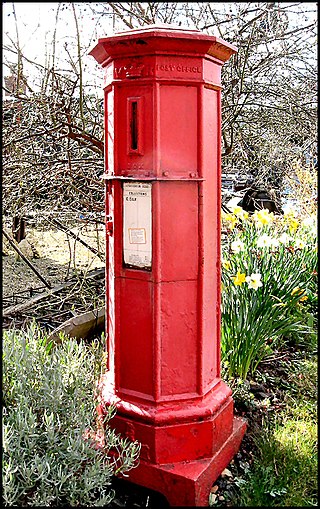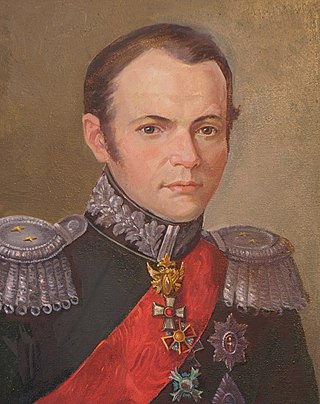Life
He was born on 28 February 1802, one of Charles Baird's three sons, and the only one to live beyond his thirties. He joined his father's company in St. Petersburg at the age of 17 and also went to the University of Edinburgh.
In 1823 he was elected to the Institution of Civil Engineers, one of its earliest members.
He married Dorothea Halliday in 1828 and they had ten children.
Some of the time he worked with his cousin William Handyside, who had a leading role in several engineering projects, and it is not entirely clear how much he helped Handyside with the specialist castings for the Alexander Column and Saint Isaac's Cathedral. The cathedral work continued under Francis Baird's supervision when Handyside left Russia after Charles Baird died in 1843. At this time, Francis took over the Baird Works and the rest of his father's business. The decorative railings on the Nicholas Bridge (opened 1850) were produced by Baird's while he was in charge.
In 1860 the Baird Works were flourishing with between 1200 and 1500 employees, and were producing half a million roubles worth of goods per year. Francis Baird died on 25 March 1864, having received many Imperial honours. A memoir of his life and his father's was published after his death.

Saint Isaac's Cathedral or Isaakievskiy Sobor is a large architectural landmark cathedral that currently functions as a museum with occasional church services in Saint Petersburg, Russia. It is dedicated to Saint Isaac of Dalmatia, a patron saint of Peter the Great, who had been born on the feast day of that saint. It was originally built as a cathedral but was turned into a museum by the Soviet government in 1931 and has remained a museum ever since, with church services held in a side chapel since the 1990s. In 2017, the Governor of Saint Petersburg offered to transfer the cathedral back to the Russian Orthodox Church, but this was not accomplished due to the protests of St Petersburg citizens opposing the offer.

George Washington Whistler was an American civil engineer best known for building steam locomotives and railroads. He is credited with introducing the steam whistle to American locomotives.

Francis Vinton Greene was a United States Army officer who fought in the Spanish–American War. He came from the Greene family of Rhode Island, noted for its long line of participants in American military history.

Robert Francis Fairlie was a Scottish-born railway engineer. He is chiefly known for the invention of the Fairlie double-bogie articulated locomotive.

George Dawe was an English portraitist who painted 329 portraits of Russian generals active during Napoleon's invasion of Russia for the Military Gallery of the Winter Palace. He relocated to Saint Petersburg in 1819, where he won acclaim for his work from the artistic establishment and complimentary verses by Pushkin. He was the son of Philip Dawe, a successful mezzotint engraver who also produced political cartoons relating to the events of the Boston Tea Party. One of his brothers was Henry Edward Dawe, also a portraitist. He died on 15 October 1829 in Kentish Town, United Kingdom.
William Bridges Adams was an English locomotive engineer, and writer. He is best known for his patented Adams axle – a successful radial axle design in use on railways in Britain until the end of steam traction in 1968 – and the railway fishplate. His writings, including English Pleasure Carriages (1837) and Roads and Rails (1862) covered all forms of land transport. Later he became a noted writer on political reform, under the pen name Junius Redivivus ; a reference to a political letter writer of the previous century.

Andrew Handyside and Company was an iron founder in Derby, England, in the nineteenth century.

The Alexander Column, also known as Alexandrian Column, is the focal point of Palace Square in Saint Petersburg, Russia. The monument was raised after the Russian victory in the war with Napoleon's France. The column is named for Emperor Alexander I of Russia, who reigned from 1801 to 1825.
William Handyside (1793–1850) was a Scottish engineer who was involved in several important construction projects in St. Petersburg.

Agustín de Betancourt y Molina was a Spanish engineer, who worked in Spain, France and Russia. His work ranged from steam engines and balloons to structural engineering and urban planning. As an educator, Betancourt founded and managed the Spanish Corps of Civil Engineers and the Saint Petersburg Institute of Communications Engineers. As an urban planner and construction manager, Betancourt supervised planning and construction in Saint Petersburg, Kronstadt, Nizhny Novgorod and other Russian cities.

Charles Baird was a Scottish engineer who played an important part in the industrial and business life of 19th-century St. Petersburg. His company specialised in steam-driven machinery and was responsible for Russia's first steamboat.

John Gellibrand Hubbard, 1st Baron Addington PC, was a City of London financier and a Conservative Party politician.

Thomas Malton, was an English painter of topographical and architectural views, and an engraver. J. M. W. Turner and Thomas Girtin were amongst his pupils. He is designated "the younger" to differentiate him from his father Thomas Malton, the Elder.

James Henthorn Todd was a biblical scholar, educator, and Irish historian. He is noted for his efforts to place religious disagreements on a rational historical footing, for his advocacy of a liberal form of Protestantism, and for his endeavours as an educator, librarian, and scholar in Irish history.

Pierre-Dominique Bazaine (1786–1838) was a French scientist and engineer.
The following is a timeline of the history of the city of Saint Petersburg, Russia.
The 1906 Birthday Honours for the British Empire were announced on 29 June, to celebrate the birthday of Edward VII on 9 November.
The 1910 Birthday Honours for the British Empire were announced on 24 June, to mark the occasion of the day set apart to celebrate the birthday of the late King Edward VII, who had died on 6 May. In the circumstances, the list was notably shorter than in preceding years.
The 1899 New Year Honours were appointments by Queen Victoria to various orders and honours of the United Kingdom and British India.

Thomas Evans Blackwell was an English civil engineer.
This page is based on this
Wikipedia article Text is available under the
CC BY-SA 4.0 license; additional terms may apply.
Images, videos and audio are available under their respective licenses.













